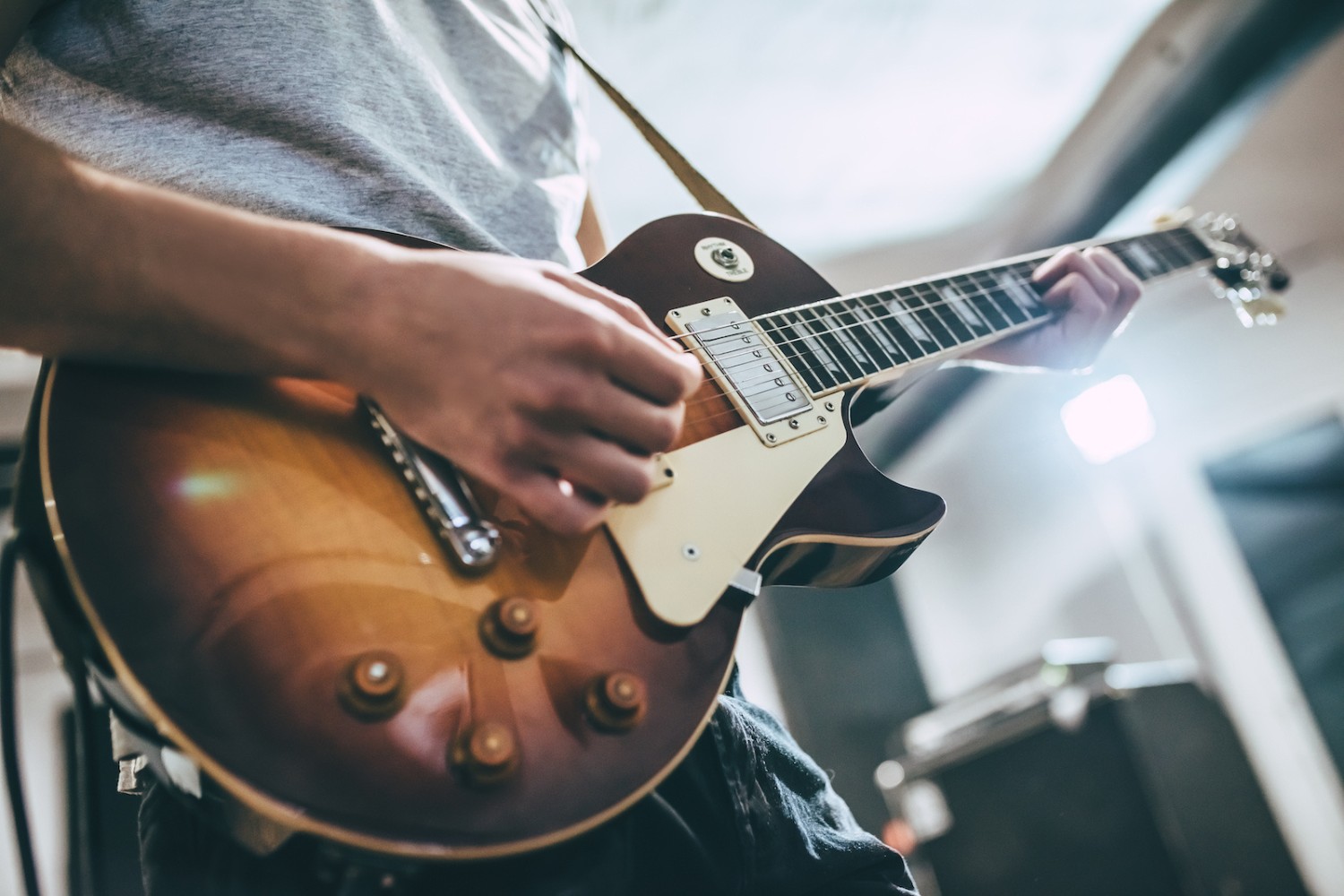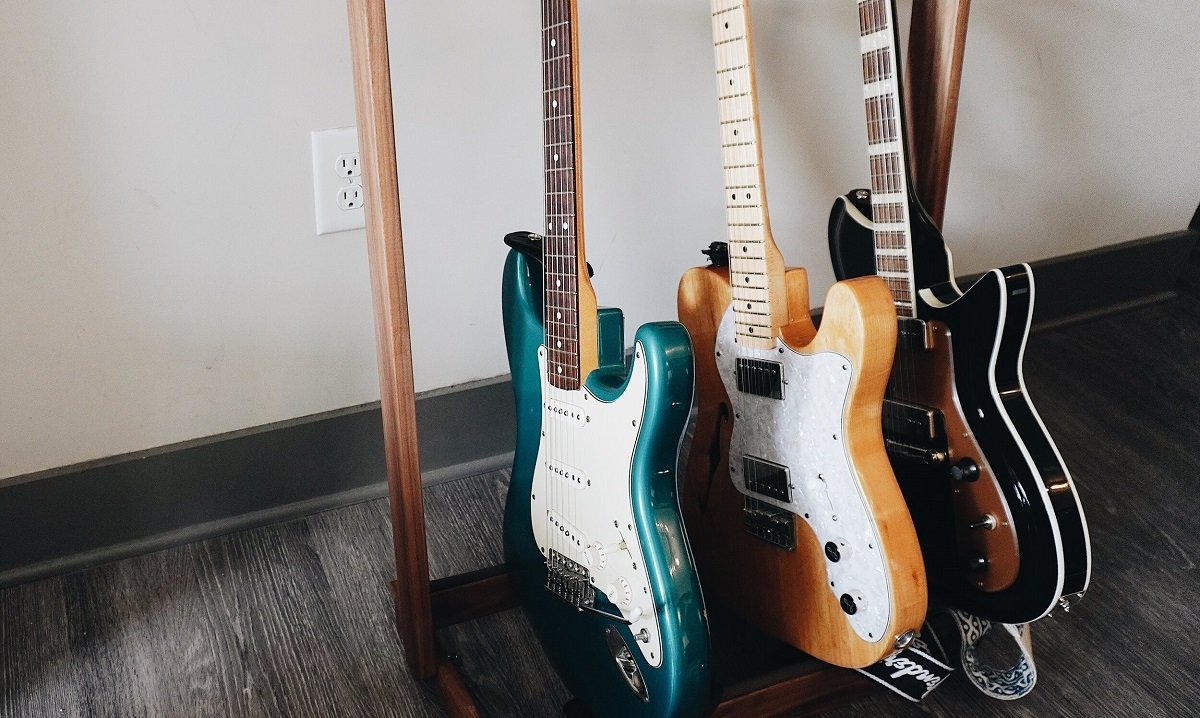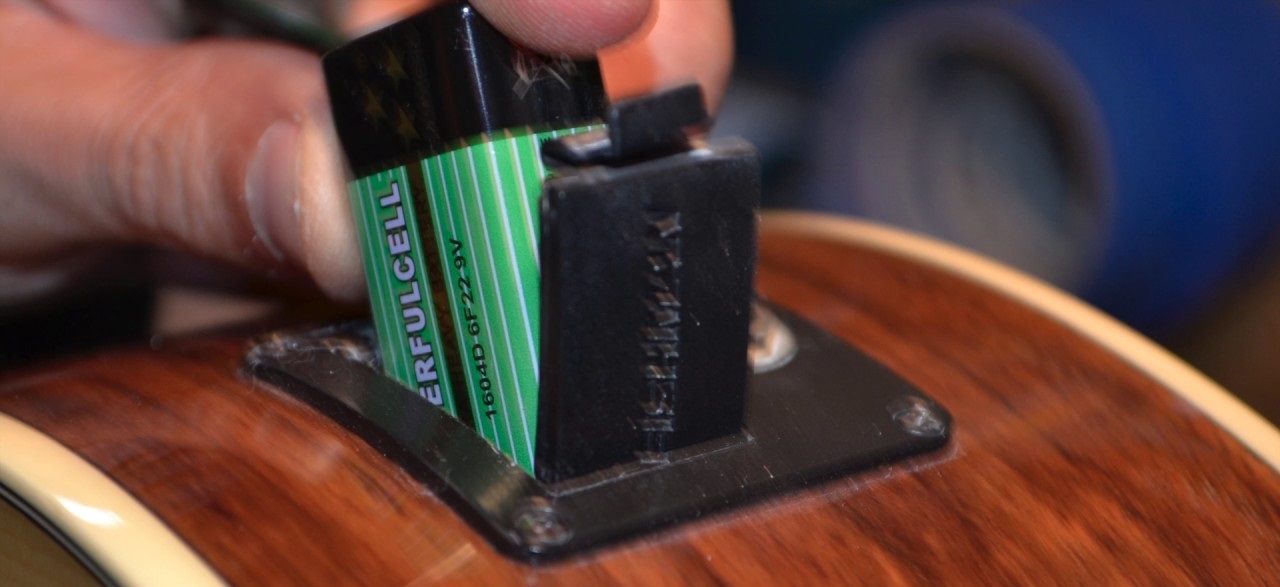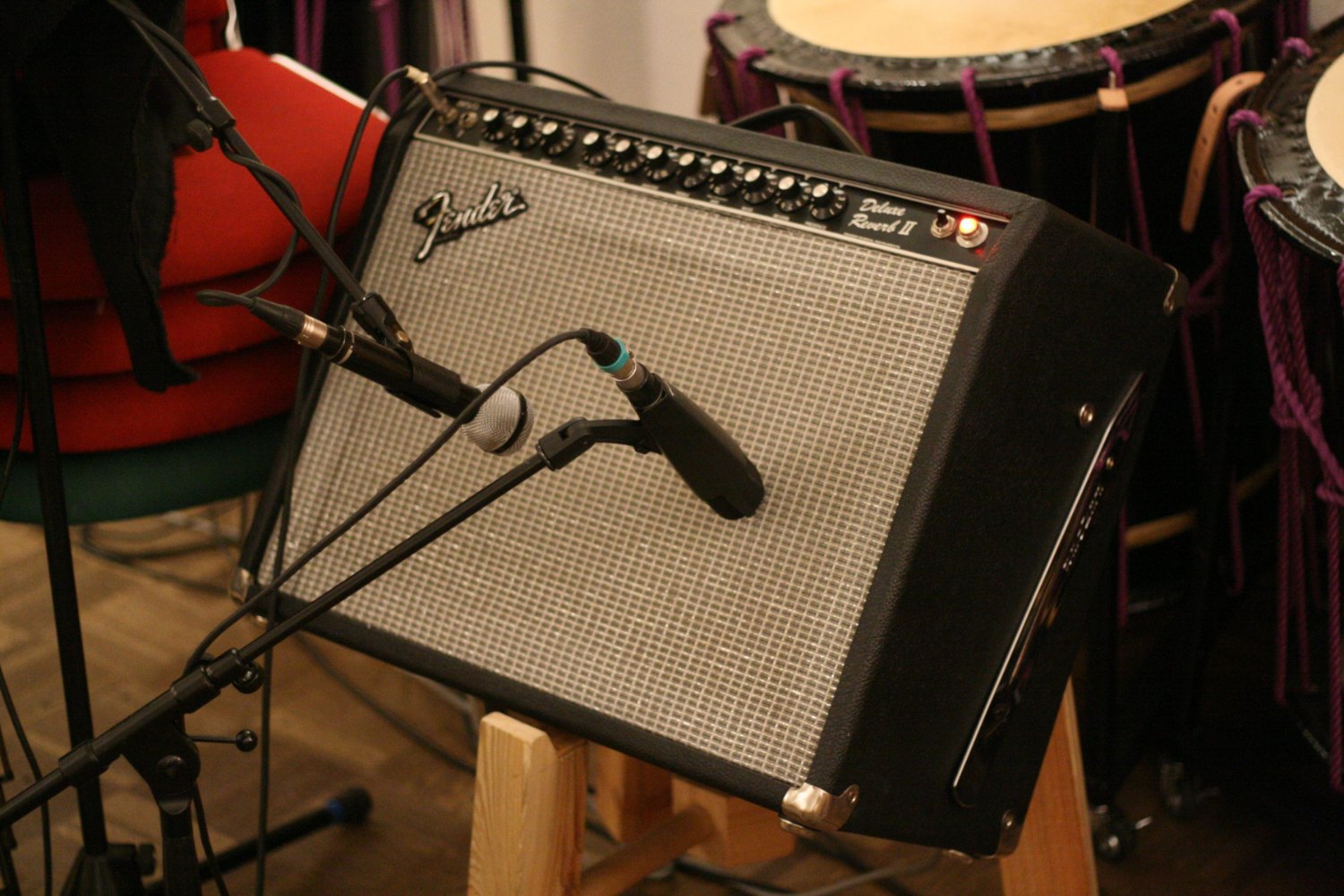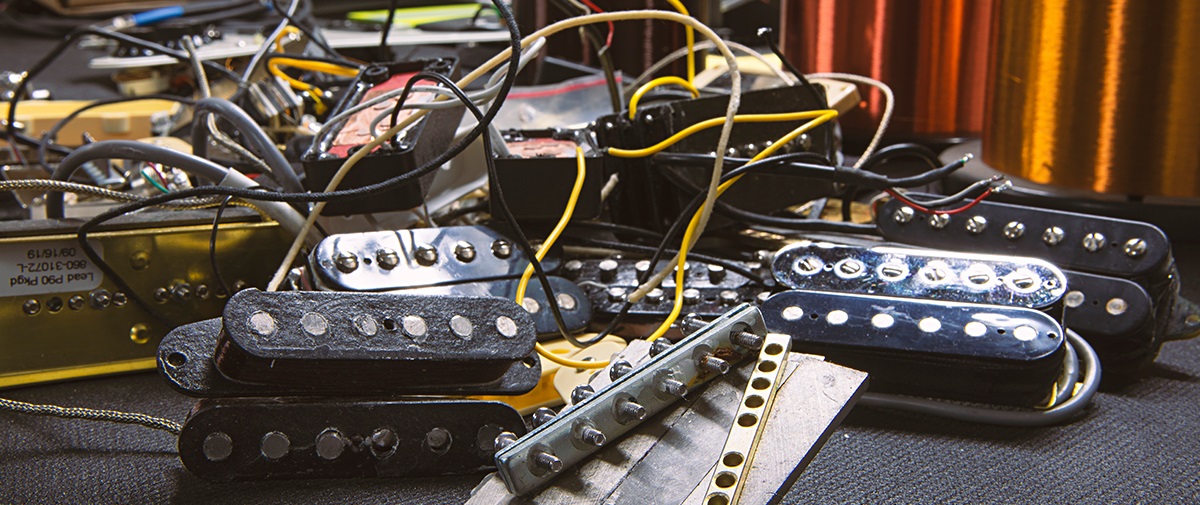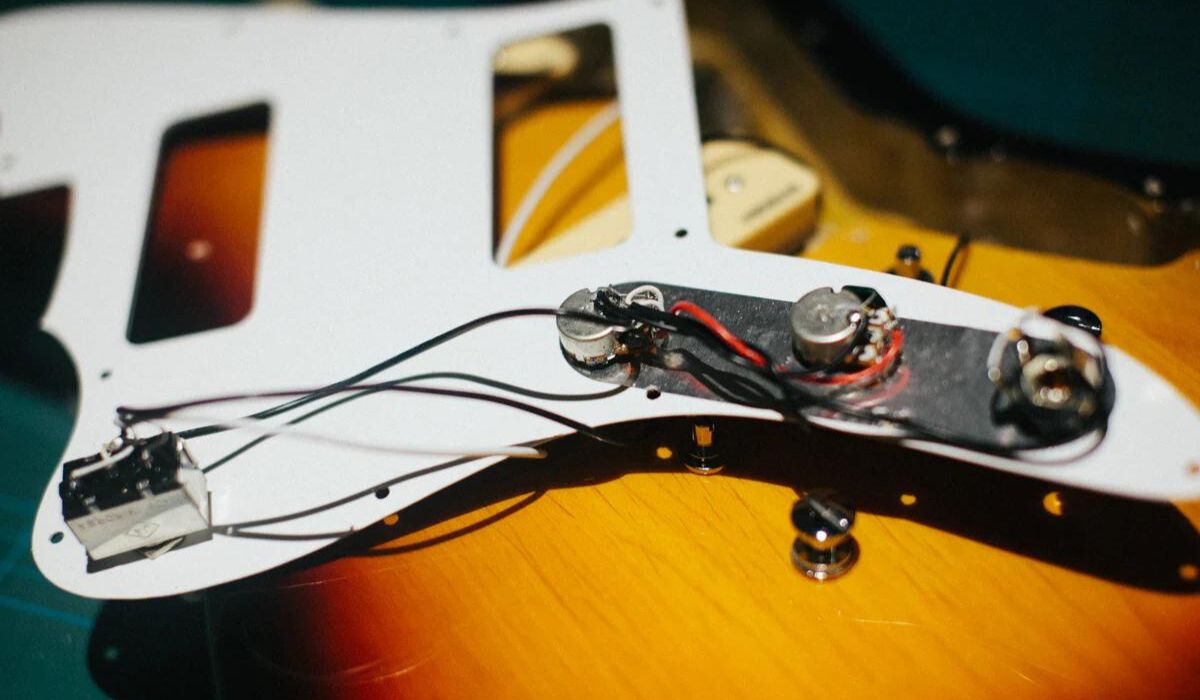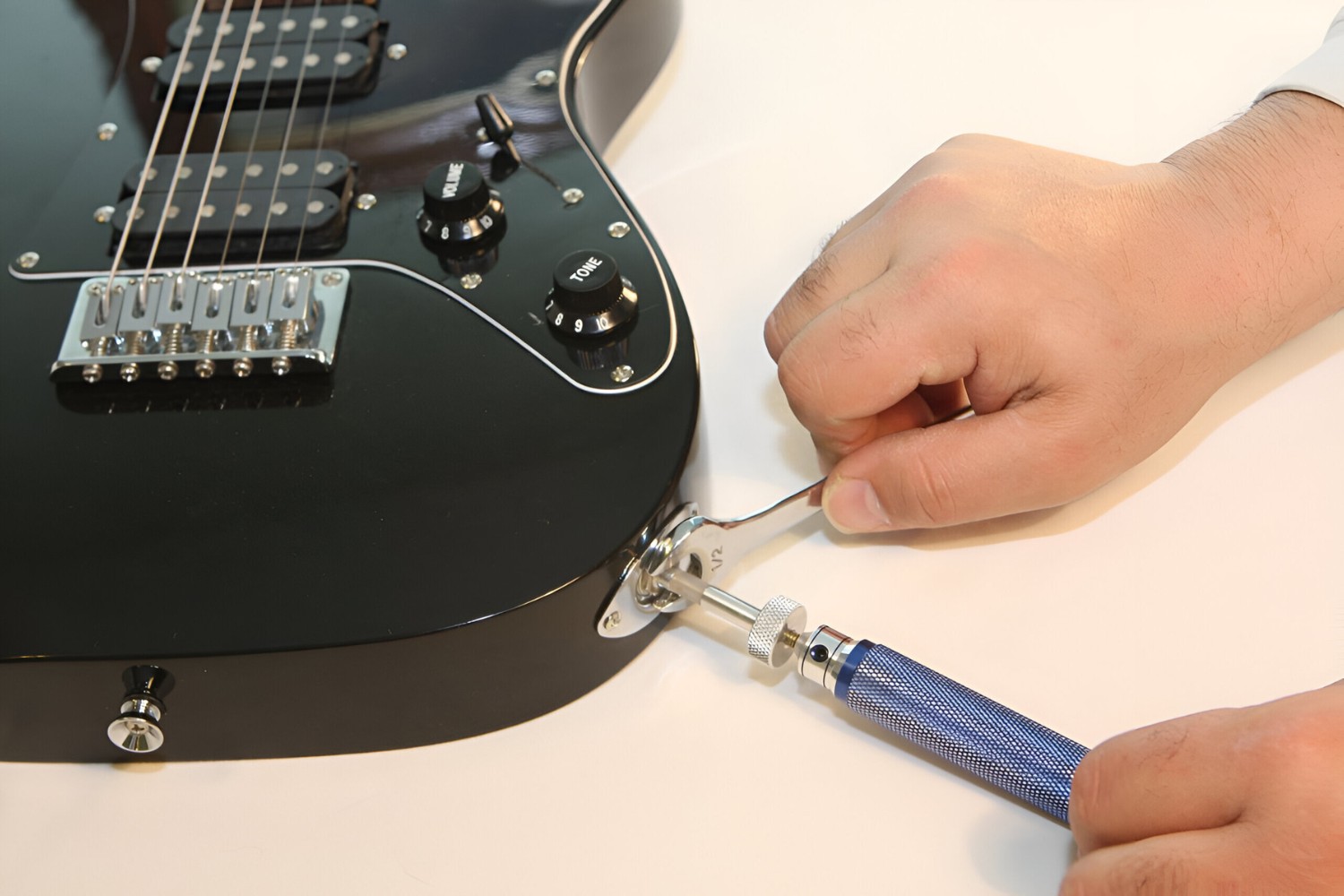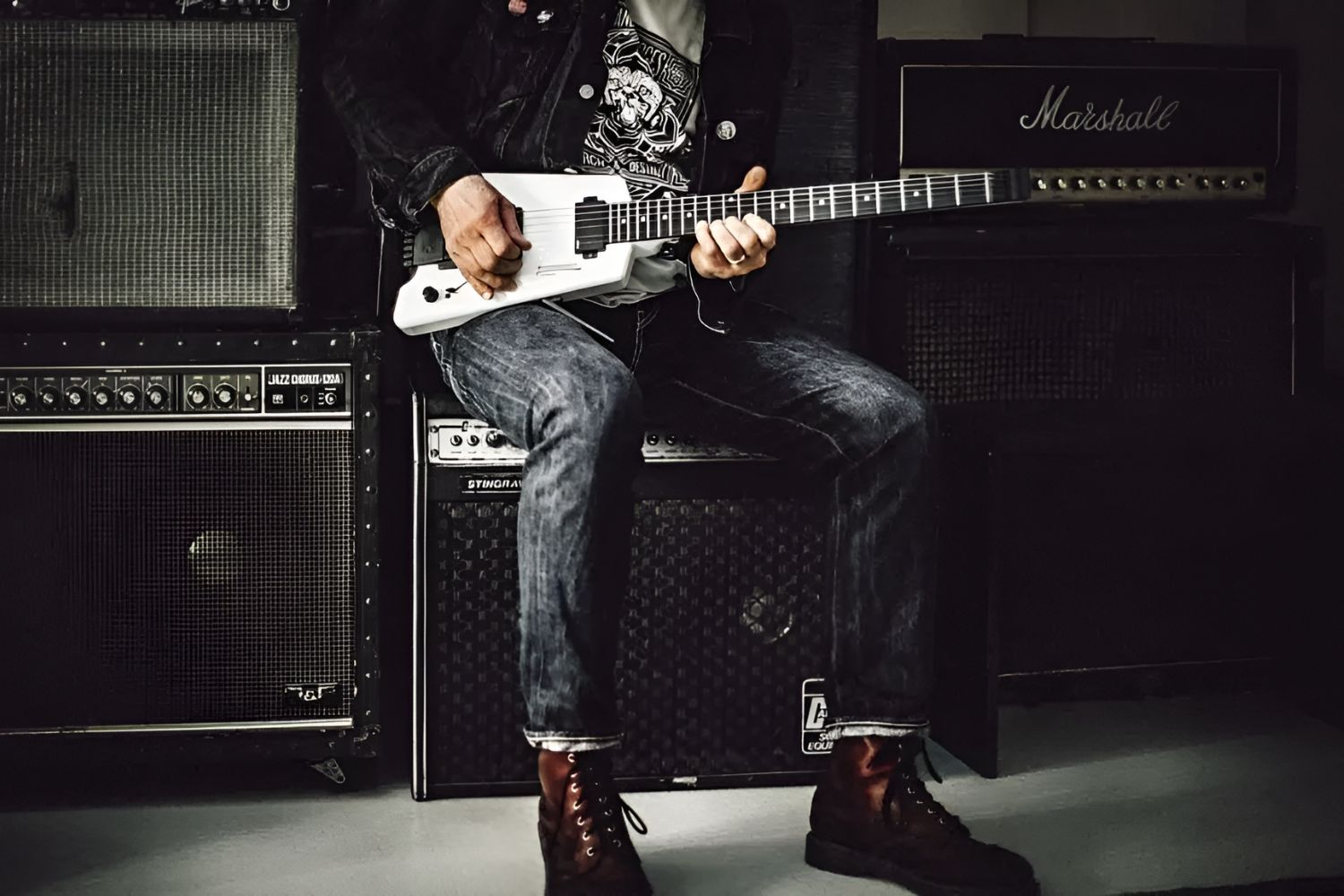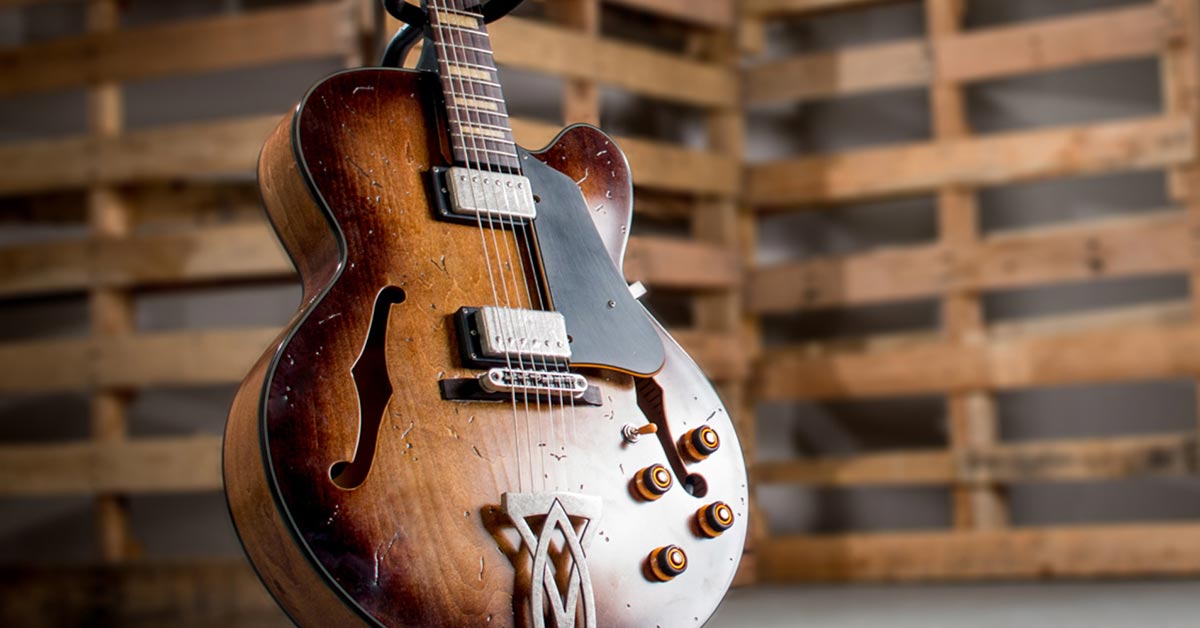Introduction
So, you've decided to embark on a musical journey with an electric guitar – congratulations! Whether you're a complete novice or transitioning from an acoustic guitar, the electrifying world of electric guitars offers a myriad of sonic possibilities and playing styles. Before you dive headfirst into shredding your favorite riffs, it's essential to understand the fundamentals of using an electric guitar. This comprehensive guide will walk you through everything you need to know, from selecting the right instrument to mastering essential playing techniques and caring for your prized possession.
Playing an electric guitar is not just about creating music; it's an immersive experience that involves understanding the instrument's nuances, exploring various sound effects, and finding your unique voice within the realm of electric guitar playing. From the iconic bluesy wails of a vintage Fender Stratocaster to the high-gain power of a modern metal machine, electric guitars cater to a diverse range of musical genres and playing styles, making them an incredibly versatile and exciting instrument to learn.
In this guide, we'll cover the essential aspects of using an electric guitar, including selecting the right instrument to match your playing style, setting up and tuning the guitar for optimal performance, mastering foundational playing techniques, harnessing the power of effects and amplifiers, and ensuring proper maintenance and care to prolong the lifespan of your instrument. By the end of this journey, you'll be equipped with the knowledge and skills to embark on your musical endeavors with confidence and creativity.
So, grab your guitar, plug in, and get ready to unleash the electrifying potential of the electric guitar. Whether you aspire to emulate the guitar heroes of the past or carve out your own sonic path, this guide will serve as your trusted companion on this thrilling musical odyssey. Let's dive in and explore the captivating world of electric guitar mastery.
Choosing the Right Electric Guitar
When venturing into the realm of electric guitar playing, selecting the right instrument is paramount. Electric guitars come in various shapes, sizes, and configurations, each catering to different playing styles and musical genres. Here are essential factors to consider when choosing the perfect electric guitar for your musical journey:
- Playing Style: Consider your preferred playing style and the genre of music you intend to explore. For instance, if you gravitate towards blues and rock, a classic single-cutaway guitar such as a Gibson Les Paul or a Fender Telecaster might be ideal. On the other hand, if you’re inclined towards heavier genres like metal, a sleek and aggressive double-cutaway guitar like an Ibanez RG series or a Jackson Soloist could be more suitable.
- Tone and Sound: Different electric guitars produce distinct tonal characteristics. The choice between single-coil and humbucker pickups significantly influences the guitar’s sonic palette. Single-coil pickups offer bright, articulate tones, while humbuckers deliver a thicker, more powerful sound with reduced noise. Understanding these tonal differences will help you align the guitar’s sound with your musical preferences.
- Comfort and Ergonomics: Ensure that the guitar feels comfortable to play, especially during extended practice sessions and performances. Factors such as body shape, neck profile, and overall weight contribute to the instrument’s playability and comfort. Visit a music store to physically try out different guitars and find one that feels natural in your hands.
- Build Quality and Craftsmanship: Assess the build quality and craftsmanship of the guitar. Look for well-constructed instruments with solid hardware, smooth fretwork, and reliable tuning stability. A high-quality guitar not only enhances your playing experience but also ensures longevity and durability.
- Budget and Affordability: Set a realistic budget based on your financial capacity and commitment to learning the instrument. While there are excellent entry-level electric guitars available, investing in a mid-range or higher-end instrument can offer superior playability, tonal versatility, and overall satisfaction.
By carefully considering these factors, you can narrow down your options and find an electric guitar that resonates with your musical aspirations. Remember, the perfect electric guitar is the one that inspires you to pick it up and play, igniting your passion for music and creativity.
Setting Up Your Electric Guitar
Before unleashing the sonic potential of your electric guitar, it’s crucial to set it up for optimal playability and performance. Here’s a step-by-step guide to help you prepare your instrument for an immersive playing experience:
- Adjusting the Action: The action refers to the height of the strings above the fretboard. To ensure comfortable playability, use the guitar’s bridge saddles to adjust the action to your preference. Lower action facilitates easier fretting, while higher action can reduce fret buzz.
- Intonating the Guitar: Intonation ensures that each note rings true and in tune across the entire fretboard. Using a tuner, adjust the length of the strings by moving the bridge saddles to achieve accurate intonation for each string.
- Checking Neck Relief: Assess the neck relief, which is the slight curvature of the neck. Use a capo to fret the first fret and a finger to press the string at the fret where the neck meets the body. Check the gap between the string and the fret at the midpoint of the neck. Adjust the truss rod if necessary to achieve the ideal neck relief.
- Setting the Pickup Height: Position the pickups at an optimal height to balance volume and tonal clarity. Experiment with different pickup heights to find the sweet spot that suits your playing style and sonic preferences.
- Checking Electronics and Hardware: Inspect the guitar’s electronics, including the input jack, tone and volume knobs, and pickup selector switch. Ensure that all components function smoothly and make any necessary adjustments or repairs. Additionally, lubricate the tuning machine heads and ensure that the hardware is secure.
- Stringing and Tuning: Install a fresh set of strings and tune the guitar to your desired pitch using a reliable tuner. Properly stretching the strings and fine-tuning the tuning stability is essential for consistent performance.
By meticulously setting up your electric guitar, you’ll optimize its playability and ensure that it performs at its best. If you’re uncertain about any of these adjustments, seeking guidance from a professional guitar technician can provide valuable insights and enhance your understanding of the instrument’s mechanics.
Remember, a well-set-up electric guitar not only enhances your playing experience but also allows you to explore the instrument’s sonic nuances with confidence and precision.
Tuning Your Electric Guitar
Tuning your electric guitar is a fundamental skill that directly impacts the instrument’s sound and playability. Whether you’re a beginner or a seasoned player, mastering the art of tuning is essential for producing harmonious melodies and chords. Here’s a comprehensive guide to tuning your electric guitar effectively:
- Standard Tuning: The standard tuning for an electric guitar, from the lowest pitch string to the highest, is EADGBE. Using a reliable tuner, ensure that each string is tuned to the correct pitch, starting with the low E string and progressing to the high E string.
- Alternate Tunings: Experimenting with alternate tunings can unlock new sonic possibilities and inspire fresh musical ideas. Popular alternate tunings include Drop D (DADGBE), Open G (DGDGBD), and DADGAD, among others. Utilize a tuner or reference pitches to accurately adjust the strings to the desired alternate tuning.
- Using Electronic Tuners: Electronic tuners are indispensable tools for precise and efficient tuning. Whether it’s a clip-on tuner, pedal tuner, or smartphone app, electronic tuners provide visual and auditory feedback to help you achieve accurate tuning across all strings.
- Tuning by Ear: Developing the ability to tune your guitar by ear is a valuable skill that enhances your musical ear and intuition. By comparing the pitch of each string to a reference note or another tuned instrument, you can refine your tuning proficiency and adapt to various playing environments without relying solely on electronic tuners.
- Regular Maintenance: Strings naturally lose tension and pitch over time, especially during vigorous playing or temperature fluctuations. Regularly check and retune your guitar to maintain consistent pitch stability, prolong string longevity, and ensure an enjoyable playing experience.
Whether you’re preparing for a practice session, recording session, or live performance, a well-tuned electric guitar is the cornerstone of a captivating and sonically pleasing musical experience. By honing your tuning skills and maintaining pitch-perfect precision, you’ll be ready to explore the boundless sonic landscape of the electric guitar with confidence and finesse.
Playing Techniques
Mastering essential playing techniques is integral to unlocking the expressive potential of the electric guitar. Whether you’re delving into soulful blues, blistering rock solos, or intricate jazz compositions, honing your playing techniques will elevate your musical prowess and creativity. Here are foundational techniques to cultivate and explore:
- Chords and Strumming: Familiarize yourself with fundamental open and barre chord shapes, and practice smooth chord transitions. Refine your strumming technique to achieve rhythmic precision and dynamic expression, mastering both gentle strumming and powerful accents.
- Single-Note Playing: Develop dexterity and accuracy in single-note playing, encompassing scales, melodies, and riffs. Embrace alternate picking, hammer-ons, pull-offs, and slides to imbue your playing with fluidity and articulation.
- Bending and Vibrato: Experiment with string bending to infuse your notes with emotive nuances and expressive bends. Additionally, cultivate controlled vibrato to add depth and character to sustained notes and phrases.
- Articulation and Dynamics: Explore the interplay of articulation and dynamics to convey a wide range of emotions through your playing. Experiment with techniques such as palm muting, legato playing, and varying pick attack to sculpt your sonic expression.
- Lead and Rhythm Playing: Delve into the intricacies of lead and rhythm playing, understanding how to seamlessly transition between accompanying chords and delivering captivating lead lines. Cultivate a sense of groove and timing to anchor the music with precision.
- Exploring Effects: Experiment with effects pedals and amplifier settings to expand your sonic palette. From lush reverb and ethereal delay to searing distortion and wah-wah modulation, effects can enhance your playing and inspire new creative directions.
Embrace a disciplined practice regimen to refine these techniques, and don’t shy away from exploring your own unique playing style and sonic identity. As you navigate the diverse landscape of electric guitar playing, remember that each technique is a building block for crafting captivating melodies, emotive solos, and powerful rhythms.
By immersing yourself in the art of electric guitar playing and continually refining your techniques, you’ll embark on a transformative musical journey filled with boundless creativity and expressive possibilities.
Using Effects and Amplifiers
Exploring the realm of effects and amplifiers is a thrilling aspect of electric guitar playing, allowing you to sculpt your sonic identity and create immersive musical landscapes. Whether you’re aiming for searing distortion, ethereal ambiance, or dynamic tonal textures, understanding the nuances of effects and amplifiers is crucial. Here’s a comprehensive guide to harnessing the power of effects and amplifiers:
- Effect Pedals: Build a collection of essential effect pedals to shape your guitar’s sound. From classic overdrive and distortion pedals to ambient reverb, lush delay, and expressive modulation effects, each pedal offers a unique sonic palette for you to explore.
- Signal Chain: Experiment with different signal chain configurations to achieve your desired tonal characteristics. Understanding the impact of pedal placement and signal routing can significantly influence the overall sound and responsiveness of your effects setup.
- Amp Selection: Choose an amplifier that complements your playing style and tonal preferences. Whether it’s a vintage tube amp exuding warm overdriven tones or a modern solid-state amp delivering pristine cleans and high-gain saturation, the amplifier serves as the sonic foundation of your guitar’s voice.
- Amp Settings: Familiarize yourself with the amplifier’s controls, including gain, EQ, and presence knobs, to sculpt your desired tonal character. Experiment with various amp settings to discover tonal nuances and dynamics that resonate with your musical vision.
- Utilizing Built-in Effects: Many amplifiers feature built-in effects such as reverb, tremolo, and chorus. Explore these onboard effects to enhance your sonic palette and streamline your setup, especially in rehearsal and performance scenarios.
- Expression and Creativity: Embrace the expressive potential of effects and amplifiers to infuse your playing with depth and emotion. From subtle sonic embellishments to bold sonic explorations, effects and amplifiers serve as powerful tools for unleashing your creativity and musical vision.
Whether you’re crafting soaring lead tones, crafting ambient soundscapes, or delivering thunderous rhythm textures, effects and amplifiers are your sonic allies in the quest for sonic excellence and artistic expression. Embrace experimentation, refine your sonic palette, and let your creativity soar as you delve into the captivating world of effects and amplifiers.
Maintenance and Care
Proper maintenance and care are essential for preserving the playability, tone, and aesthetics of your electric guitar. By incorporating routine maintenance practices and attentive care, you can ensure that your instrument remains in optimal condition for years to come. Here’s a comprehensive guide to maintaining and caring for your electric guitar:
- Regular Cleaning: Wipe down your guitar with a soft, lint-free cloth after each playing session to remove fingerprints, sweat, and dust. Periodically clean the fretboard with a damp cloth and condition it with suitable fretboard oil to prevent drying and cracking.
- String Maintenance: Replace your guitar strings regularly to maintain consistent tone and playability. Wipe down the strings after playing to remove residue and extend their lifespan. Additionally, use string lubricants to minimize friction at contact points, reducing string breakage and tuning instability.
- Truss Rod Adjustment: Monitor the neck relief of your guitar and make truss rod adjustments as needed to maintain optimal playability and prevent fret buzzing. Seek professional assistance if you’re uncertain about adjusting the truss rod.
- Hardware Inspection: Periodically inspect the hardware, including the tuning machines, bridge, and strap buttons, to ensure they are secure and functioning properly. Tighten any loose hardware and lubricate moving parts to maintain smooth operation.
- Climate Control: Store your guitar in a stable environment with moderate temperature and humidity levels to prevent warping, cracking, and other structural issues. Use a humidifier or dehumidifier as necessary to maintain ideal humidity levels for your instrument.
- Case or Gig Bag Storage: When not in use, store your guitar in a suitable hardshell case or padded gig bag to protect it from physical damage, dust, and moisture. Ensure that the case or gig bag provides adequate cushioning and support for the instrument.
- Professional Maintenance: Schedule periodic professional setups and inspections with a qualified guitar technician. Professional maintenance can address intricate adjustments, fret leveling, electronic diagnostics, and other technical aspects that contribute to the guitar’s overall performance and longevity.
By integrating these maintenance practices into your guitar care routine, you’ll safeguard your instrument’s integrity and ensure that it continues to inspire and resonate with you for countless musical endeavors. Remember, a well-maintained electric guitar not only delivers consistent performance but also becomes a cherished companion on your musical journey.
Conclusion
Congratulations on embarking on this enriching journey into the captivating world of electric guitar mastery. Throughout this guide, we’ve delved into the essential aspects of using an electric guitar, from selecting the right instrument and setting it up for optimal performance to mastering foundational playing techniques, harnessing the power of effects and amplifiers, and ensuring proper maintenance and care.
As you immerse yourself in the art of electric guitar playing, remember that each note you play is a brushstroke in the canvas of musical expression. Whether you’re captivated by the raw energy of rock ‘n’ roll, the soulful resonance of blues, the technical prowess of metal, or the boundless creativity of experimental genres, the electric guitar is a versatile conduit for your sonic aspirations.
Embrace the journey of self-discovery and artistic exploration that the electric guitar offers. Cultivate your unique playing style, experiment with diverse tones and effects, and let your creativity flow freely through the strings. Whether you’re strumming gentle chords, unleashing scorching solos, or crafting intricate compositions, the electric guitar is your vessel for musical storytelling and personal expression.
Remember, every practice session, every new technique learned, and every sonic experiment brings you closer to realizing your musical vision. Embrace the challenges, celebrate the breakthroughs, and cherish the moments of pure musical inspiration that the electric guitar bestows upon you.
So, pick up your guitar, plug into your amplifier, and let the electrifying sound of your instrument resonate with passion and purpose. Whether you’re practicing in solitude, jamming with fellow musicians, or captivating audiences on stage, may your electric guitar be a source of joy, creativity, and endless musical possibilities.
As you continue your journey, may the music you create with your electric guitar be a reflection of your unique voice and an enduring testament to the power of artistic expression. Here’s to the boundless horizons of electric guitar playing – may your musical odyssey be filled with inspiration, growth, and the timeless allure of six strings and limitless potential.







